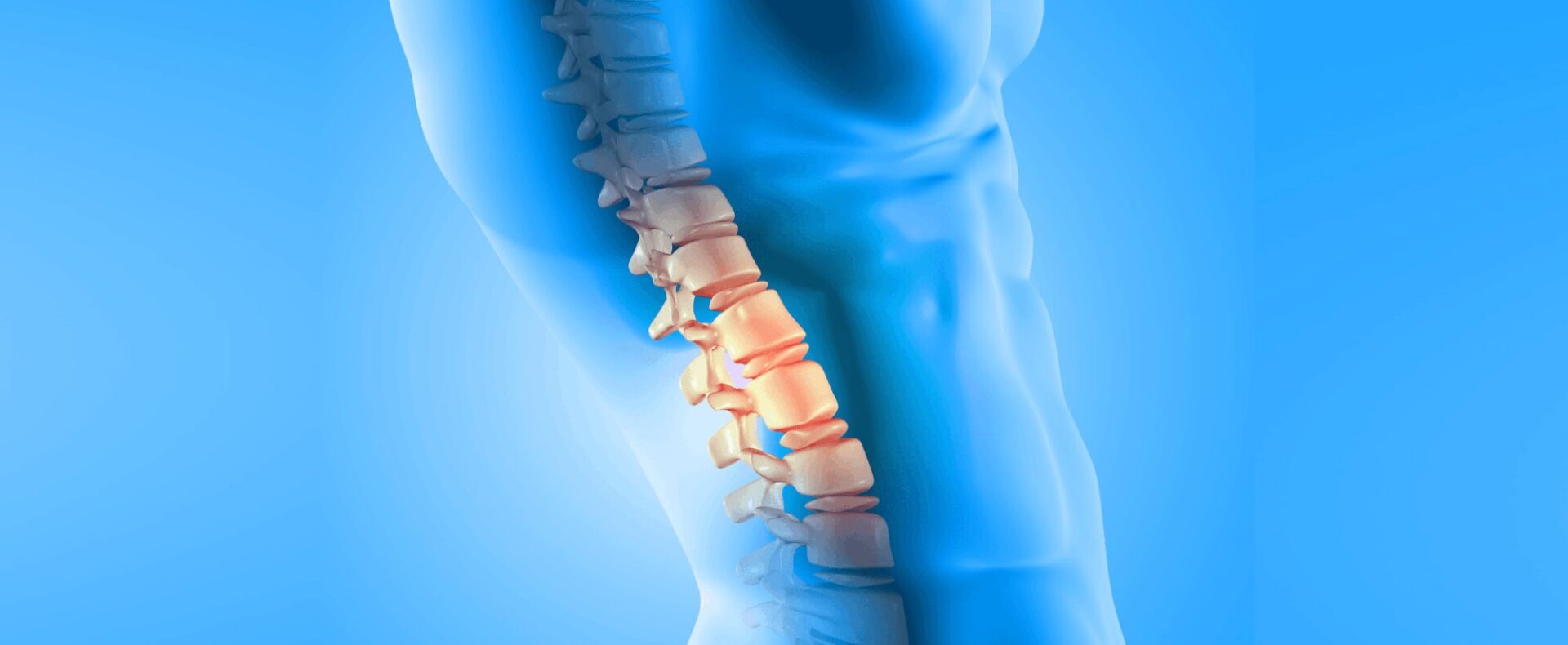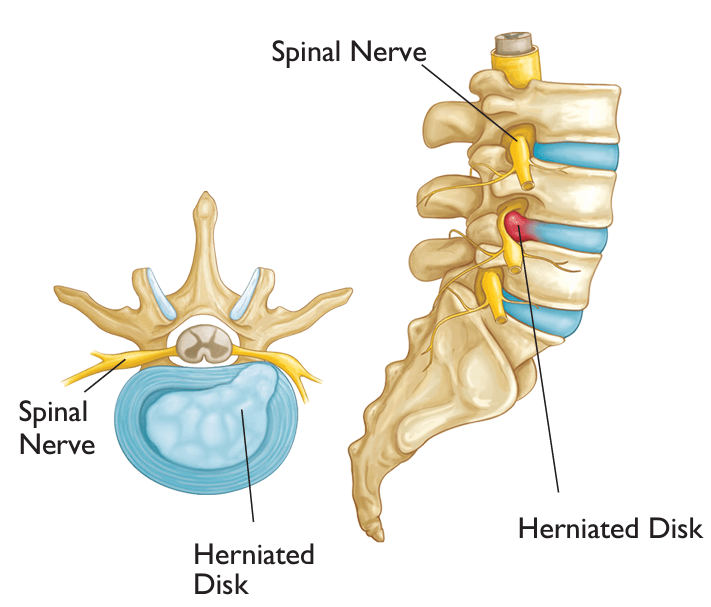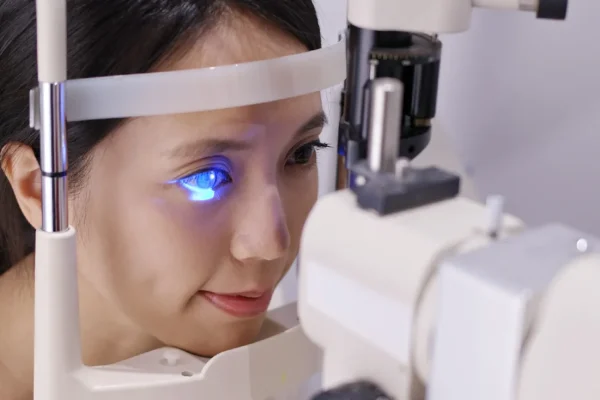
16 Aug Slipped Discs: Symptoms, Causes & Treatments in Malaysia
Slipped Discs: Symptoms, Causes & Treatments in Malaysia
By Island Hospital | August 16, 2024 12:00:00 PM
Medical Reviewer: Prof. Dr. Dato Oh Kim Soon, Orthopaedics & Spine Surgeon
Slipped discs have become a prevalent source of back pain among Malaysians, making it crucial to understand this condition and its effects on everyday life.
In this comprehensive guide, we will explore the intricacies of slipped discs. We will cover a range of topics, including symptoms, causes, risk factors, diagnosis, available treatments for slipped discs in Malaysia, and ways to prevent such a condition.
Continue reading to gain a thorough understanding of this spinal condition.
Anatomy of The Spine
To understand how a slipped disc occurs and why it can cause such significant discomfort and disruption to our daily lives, we must first understand the anatomy of our spine.
Our spine is a remarkable structure designed to be strong and flexible, enabling it to support our body and facilitate movement. This unique design consists of strong bones called vertebrae, separated by flexible soft tissues known as intervertebral discs.
The vertebrae protect and support your spinal cord while bearing most of the weight on your spine.
Between these vertebrae lie the intervertebral discs, which act as shock absorbers and allow your spine to bend and twist.
Each disc comprises 2 main parts: a tough outer ring called the annulus fibrosus, which provides structure and containment, and a soft, jelly-like centre known as the nucleus pulposus, which allows flexibility and cushioning.
Lastly, running through the centre of this intricate structure is the spinal cord, a bundle of nerves vital for transmitting signals between our brain and the rest of our body.
What is a Slipped Disc?
Now, let’s dive into what a slipped disc actually is.
A slipped disc, also known as a herniated or prolapsed disc, occurs when one of the intervertebral discs bulges or ruptures.
When a disc “slips,” its soft inner core (nucleus pulposus) pushes through a crack in the tougher exterior (annulus fibrosus), potentially irritating nearby nerves.
How Do I Know if I Have Slipped a Disc?
Here are some common signs and symptoms that may indicate a slipped disc:
- 1. Lower back pain or neck pain
Depending on the location of the herniated disc, you may experience severe, sharp, or burning pain in your lower back or neck. - 2. Radiating pain
The pain may radiate down your leg (if the herniation is in the lower back) or down your arm (if the herniation is in the neck). This occurs when the bulging disc presses on a nerve root. - 3. Numbness or tingling sensation
You may experience numbness or tingling sensations in the areas supplied by the affected nerve, such as the leg, foot, arm, or hand. - 4. Muscle weakness
When a disc herniates, it exerts abnormal pressure on the spinal cord and the surrounding nerve roots. This compression can lead to sudden muscle weakness. - 5. Limited mobility or loss of balance
The pain and nerve compression may limit your range of motion, making it difficult to bend, twist, or walk normally. You may also experience a loss of balance and coordination. - 6. Difficulty with bowel or bladder control
In rare but severe cases, if the herniated disc compresses the cauda equina nerves in the lower spine, it can cause loss of bowel or bladder control, which requires immediate medical attention.
If you experience any of these symptoms, please seek medical attention promptly.
A healthcare professional can perform a thorough examination to confirm the diagnosis and determine the appropriate treatment plan for you.
Do you know that back pain is also a symptom of scoliosis? Check out the article on scoliosis to learn more about this spine condition.
Are You Prone to Slipped Disc?
To take proactive steps in preventing slipped discs, you must first understand the risk factors for slipped discs:
- 1. Age
Individuals who are middle-aged are more susceptible to slipped discs due to natural disc degeneration. - 2. Gender
Men are more likely to experience slipped discs than women, most likely due to increased mechanical stress and physical injury. - 3. Improper lifting techniques
Twisting while lifting and employing your back muscles to lift heavy items can lead to disc herniation, as you are putting too much stress on your spine.
To safeguard your spine, use your legs rather than your back when lifting.
- 4. Weight
Being obese puts extra stress on your spine, elevating the risk of disc problems. - 5. Sedentary Lifestyle
Sitting for a long time, whether driving or at a desk job, and not getting regular exercise can elevate your risk of developing a slipped disc.
This inactive lifestyle not only exerts excessive pressure on your spine but also weakens your disc structures and supporting muscles, making you more susceptible to disc problems.
- 6. Smoking
Smoking exposes your body to carbon monoxide, which interferes with your discs’ ability to absorb essential nutrients from your bloodstream.
Without proper nutrients to sustain your discs, they can become dehydrated and less flexible, causing them to be more susceptible to slipping.
- 7. Performing spine-straining activities repetitively
Many occupations, particularly those in physically demanding fields like construction and manual labour, often require workers to constantly lift, pull, bend, or twist movements throughout their workday.
Over time, such repetitive actions can accumulate significant stress on your spinal structure, potentially leading to slipped discs or other back injuries.
Similarly, repetitive motions involving knee and hip joints can contribute to the development of arthritis, sometimes necessitating joint replacement surgery.
To learn more about these procedures and how they can help restore mobility and quality of life, check out our informative articles on hip replacement and knee replacementsurgeries.
How Do Doctors Detect Slipped Discs?
To diagnose a slipped disc, doctors typically follow a comprehensive approach:
- 1. Understand your medical history and symptoms
Your doctor will first inquire about your general health, symptoms, and when you first experienced them. They will also ask about activities that worsen your pain and any relevant medical history. - 2. Perform physical examinations
Then, a thorough physical exam will be conducted to find out your actual condition and the source of your discomfort.
This includes assessing your range of motion and sensation, checking for areas of pain or numbness, and conducting neurological tests, such as the straight leg raise test (SLR), to evaluate muscle strength and reflexes.
- 3. Perform imaging tests
If a slipped disc is suspected, imaging tests are usually the next step. Depending on your condition, your doctor may order one or more of the following tests:- a) MRI (Magnetic Resonance Imaging)
This is the most useful and common test for diagnosing slipped discs. It provides detailed images of your spine, spinal cord, nerve roots, and surrounding tissues. - b) X-rays
While not showing soft tissues, X-rays can show images of your bones and help rule out other causes of back pain, such as fractures or tumours. - c) CT scan (Computed Tomography)
This test provides detailed images of bones and can be useful if MRI is unavailable. - d) Discogram/Discography
This is an interventional diagnostic test that helps identify the problematic intervertebral disc.
In this test, a contrast liquid is injected into your spinal discs guided by an X-ray to reproduce your back pain symptoms temporarily. This helps identify the discs that need to be treated or removed.
- e) Myelogram
This diagnostic imaging test uses contrast dye with X-rays or CT to examine your spinal canal.
It provides a clear view of bones, discs, and tissues that may be pressing on your nerves or spinal cord, revealing details not visible in standard CT scans or MRIs.
- a) MRI (Magnetic Resonance Imaging)
- 4. Perform additional tests
In some cases, electromyogram (EMG) and nerve conduction tests may be employed to assess your nerve function and pinpoint the exact location of nerve compression by measuring the electrical activities in your muscles and nerves.
The final diagnosis will be based on the combination of your reported symptoms, physical examination findings, and results from any conducted tests.
Notably, complex diagnostic tests are not always necessary initially.
Doctors may only recommend further testing if you experience severe symptoms, such as numbness or paralysis in the legs, bladder or bowel dysfunction or unbearable pain despite treatment.
How to Treat Slipped Discs?
The treatment options for slipped discs in Malaysia typically follow a stepped approach, starting with conservative methods and progressing to more invasive options if necessary.
Non-Surgical Treatment for Slipped Discs
Most treatments begin in a non-surgical manner, including:
- 1. Balance between resting and exercising
While sufficient rest is vital for those experiencing high-intensity pain, it is recommended to stay active with light physical activities like walking.
Prolonged inactivity can result in muscle weakness and joint stiffness, potentially causing additional problems.
- 2. Medication
Over-the-counter pain relievers and anti-inflammatory medications, such as NSAIDs and acetaminophen (paracetamol), are commonly used to manage pain and reduce inflammation caused by slipped discs.
For severe cases, doctors may prescribe stronger medications like opioids, steroids (“cortisone”), or muscle relaxants.
- 3. Physical therapy
Physical therapy encompasses both active and passive therapies.
Active therapies involve exercises and back training to strengthen core muscles, improve flexibility, and correct posture.
On the other hand, passive therapies include manual therapy, massages, and treatments using physical stimuli like heat, cold, or ultrasound to relax tense muscles and locked joints.
Some patients may find relief through alternative therapies such as acupuncture or chiropractic care, though these should be pursued under medical guidance.
Surgical Treatment for Slipped Discs
If conservative treatment fails to provide relief after several weeks or months, or if there is significant nerve compression or weakness, surgery may be recommended.
These are some of the surgical options available to treat a severe case of slipped disc:
- 1. Percutaneous Intra-Discal Therapy
Some intervertebral discs may respond well to electrothermal treatment delivered via a needle directed into the offending disc. This daycare procedure is a convenient and speedy way to manage disc bulges or prolapses. - 2. Discectomy (Endoscopic Or Microscope-Assisted)
In this minimally invasive surgery, a small portion of the slipped disc is removed to relieve pressure on the affected nerve.
This surgery is a common procedure to treat a slipped disc (when the disc is the sole cause of compression in a stable spine segment), as it offers quicker recovery and less tissue damage than traditional surgery.
- 3. Decompression Surgery
This surgery addresses nerve compression in the back.
Procedures may involve removing, repairing, or adjusting part of the compressing source to alleviate nerve compression and reduce pain – and may also involve removing a disc, exuberant bone growth, thickened ligaments, or tumours.
We handle this surgery on the entire spine, from the cervical spine to the thoracic spine, lumbosacral spine, and coccygeal spine.
- 4. Microdiscectomy
In this surgery, a small portion of the slipped disc is removed to relieve pressure on the affected nerve.
This surgery is a common procedure to treat a slipped disc, as it offers quicker recovery and less tissue damage than traditional surgery.
- 5. Lumbar spine surgery
This surgery addresses slipped discs in the lower back.
Procedures may involve removing, repairing, or adjusting part of the disc to alleviate nerve compression and reduce pain.
- 6. Cervical spine surgery
This surgery targets slipped discs in the neck area.
Procedures may include removing the damaged disc or fusing the discs to stabilise the spine and relieve pressure on nerves.
- 7. Spinal fusion
This surgery permanently connects two or more discs, eliminating motion between them. Its effects include stabilising the spine, reducing pain, and preventing further disc degeneration in severe cases. - 8. Disc replacement
In certain types of conditions, an artificial disc is inserted to replace the damaged one while maintaining spinal mobility. This option aims to preserve the natural motion of your spine while alleviating pain and nerve compression.
Ultimately, the choice of treatment for slipped discs depends on the severity of your condition, your overall health, and your response to initial therapies.
Hence, working closely with your healthcare provider to develop a personalised treatment plan is essential.
What Happens if a Slipped Disc is Left Untreated?
Initially, the pain and discomfort caused by slipped discs may seem manageable, leading some individuals to delay seeking treatment.
However, if left untreated, a slipped disc can induce several potential complications, including:
- 1. Persistent pain
The herniated disc can continue to compress the surrounding nerves, causing chronic pain in your back, neck, arms, or legs.
The psychological impact of such chronic pain should not be underestimated, as it can lead to depression and anxiety.
- 2. Restricted mobility
The pain and nerve compression can limit your range of motion and impair your daily activities. - 3. Nerve damage
Prolonged pressure on the nerves can cause permanent nerve damage, resulting in numbness, weakness, or paralysis in the affected areas.
If not treated promptly, this damage can even result in permanent disability.
There is also a risk of developing cauda equina syndrome, a rare but severe condition affecting the bundle of nerves at the lower end of your spinal cord, which can cause loss of bladder and bowel control.
Given these risks, it is crucial for individuals experiencing symptoms of a slipped disc to seek prompt medical attention.
If you are troubled by a slipped disc, visit Island Hospital’s Spine Centre today for expert diagnosis and treatment.
We are equipped with cutting-edge technology, including robotic-assisted surgery, open tilting magnetic resonance imaging (MRI), the EOS X-ray system, and many more.
These advanced tools allow us to provide precise, minimally invasive treatments with faster recovery times and better outcomes, resulting in more successful surgeries compared to conventional methods.
Hence, take charge of your slipped disc by booking an appointment with Island Hospital today.
Here Are Some Useful Tips to Avoid Slipped Discs!
Prevention is always better than cure. Here’s what you can do to protect your spine and reduce the risk of a slipped disc:
- Maintain a healthy weight to reduce stress on your spine.
- Exercise regularly, focusing on core-strengthening activities like Pilates or yoga.
- Use proper lifting techniques when lifting heavy objects: bend your knees, keep the object close to your body, and avoid twisting.
- Quit smoking, as it can accelerate disc degeneration.
- Practise good posture throughout the day, whether sitting, standing, or walking.
- Avoid prolonged sitting, which exerts extra pressure on your spine.
- Stay hydrated to keep your discs resilient and better able to sustain movements.
- Sleep on a medium-firm mattress for adequate spinal support.
- Avoid repetitive motions to prevent overstraining specific areas.
- Use proper protective gear and techniques when engaging in sports or high-impact activities.
By incorporating these preventive measures into your daily life, you can lessen your risk of experiencing slipped discs and maintain better overall spinal health.
Treat Your Slipped Disc at Island Hospital Today
While slipped discs can be challenging, it is evident that numerous effective treatment options exist.
For those seeking exceptional care for slipped discs, orthopaedic surgeries, or other related concerns, the Spine Centre at Island Hospital is the place to go.
Recognised as one of the best in the country, our Spine Centre takes a collaborative approach to diagnosis and treatment, leveraging innovative research and cutting-edge technology that promotes faster recovery and minimal scarring.
On the other hand, our team of orthopaedic professionals brings over 65 years of combined experience to every case, allowing us to tackle even the most complex spinal conditions with confidence and precision.
This commitment to excellence has earned us recognition as the finalist for Malaysia’s Flagship Medical Tourism Hospital Programme and a place on Newsweek’s lists of World’s Best Hospitals 2024 and Best Specialized Hospitals Asia Pacific 2024 (Orthopaedic).
Don’t let a slipped disc or any orthopaedic issue limit your life. Take the first step towards recovery by booking an appointment with our expert team today.
Should you have any enquiry, feel free to contact us.
FAQ
How to sleep with a slipped disc?
Sleeping with a slipped disc can be challenging, but proper positioning can help alleviate pain:
- 1. Sleep on your back with a small pillow under your knees to reduce pressure on your spine.
- 2. If side sleeping is more comfortable, place a pillow between your knees to maintain spinal alignment.
- 3. Use a medium-firm mattress that supports your spine without being too hard.
- 4. Avoid sleeping on your stomach, as this can strain your back and put a lot of pressure on your spine.
- 5. Consider using a body pillow for additional support.
- 6. Moving your entire body as a unit to avoid twisting when getting in or out of bed.
Always consult your doctor for personalised advice, as the best sleeping position may vary depending on the location of your slipped disc.
Can I go to A&E for a slipped disc?
While a slipped disc can be extremely painful, it is not typically considered an emergency requiring A&E treatment unless you experience:
- 1. Severe, unbearable pain that doesn’t respond to over-the-counter pain relievers
- 2. Loss of bladder or bowel control
- 3. Numbness in the saddle area (around your inner thighs, buttocks, and genitals)
- 4. Progressive weakness in your legs
- 5. Difficulty walking or standing
In most cases, it is best to consult your general practitioner or a spine specialist for slipped disc treatment. They can provide appropriate care or refer you to emergency services if necessary.
Can a chiropractor fix a slipped disc?
Chiropractors can often help manage the symptoms of a slipped disc, but they cannot “fix” or reverse the condition entirely.
Chiropractic care for a slipped disc may include:
- 1. Spinal adjustments to improve alignment and reduce pressure on the affected disc.
- 2. Manual therapy techniques to alleviate muscle tension.
- 3. Exercises and stretches to improve flexibility and strength.
- 4. Advice on posture and lifestyle modifications.
While many patients find relief through chiropractic treatment, it is important to note that:
- • The effectiveness can vary depending on the severity and location of the slipped disc.
- • Chiropractic care should be approached cautiously, especially in severe cases.
- • It is crucial to consult with a medical doctor before starting chiropractic treatment.
- • In some cases, more invasive treatments like surgery may be necessary.
Always seek a proper diagnosis from a qualified healthcare provider before beginning any treatment for a slipped disc. They can help determine if chiropractic care is appropriate for your specific condition.
Refer here for more information on the diagnosis of slipped discs.
Can you permanently fix a slipped disc?
A slipped disc can be treated effectively, but it may not always be “cured” completely.
Proper treatment, such as conservative methods (rest, physical therapy, medication) or surgery (discectomy or spinal fusion), can often resolve or significantly improve the symptoms.
However, the damaged disc itself may not return to its original condition, and there is a risk of recurrence or long-term degenerative changes in the spine.
Visit this section to learn more about the ways to treat slipped discs.
How long will a slipped disc take to heal?
The time it takes for a slipped disc to heal can vary significantly depending on several factors, such as the severity of the herniation, the location of the disc, and the treatment approach.
In general:
- 1. With conservative treatment (rest, pain medication, physical therapy):
- ◦ Mild to moderate cases may improve within 6 weeks to 3 months.
- ◦ More severe cases may take up to 6 months or longer to heal.
- 2. With surgery (discectomy or microdiscectomy):
- ◦ Recovery can take 4 to 6 weeks for the initial healing process.
- ◦ Full recovery and return to normal activities may take 3 to 6 months.
Notably, proper adherence to the recommended treatment plan, including rest, physical therapy, and gradual return to activity, can facilitate the healing process and improve the chances of a successful recovery.
Which hospital is best for slipped discs in Malaysia?
For patients seeking treatment for slipped discs in Malaysia, Island Hospital‘s Spine Centre stands out as a top choice.
Recognised as one of the best in the country, our Spine Centre takes a collaborative approach to diagnosis and treatment, leveraging innovative research and cutting-edge technology.
In addition, with over 70 years of combined experience, our team of professionals specialises in minimally invasive procedures, promoting faster recovery and better outcomes.
Our excellence in orthopaedic care is further validated by the recognition on Newsweek’s lists of World’s Best Hospitals 2024 and Best Specialized Hospitals Asia Pacific 2024 for Orthopaedics.
Take the first step towards slipped disc recovery by booking an appointment booking an appointment with our expert team today. Should you have any enquiry, feel free to contact us.








